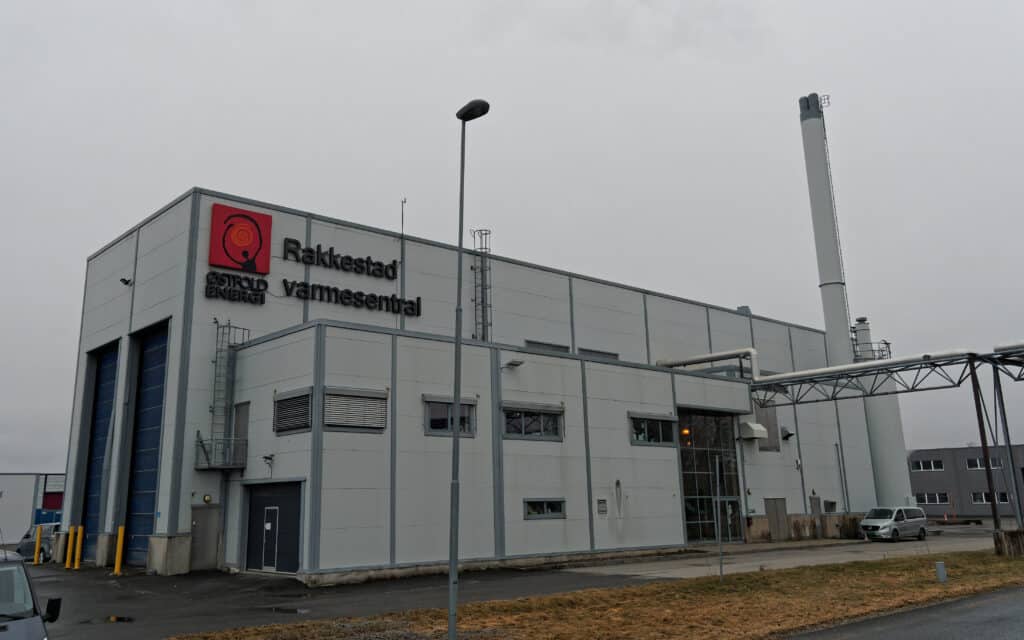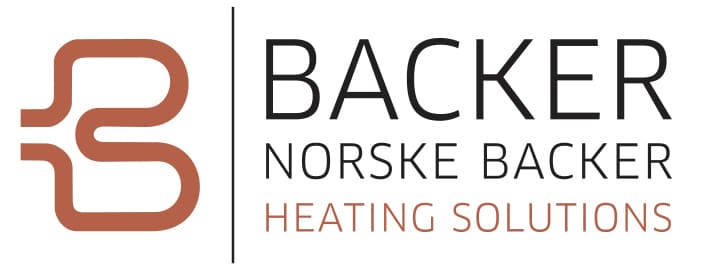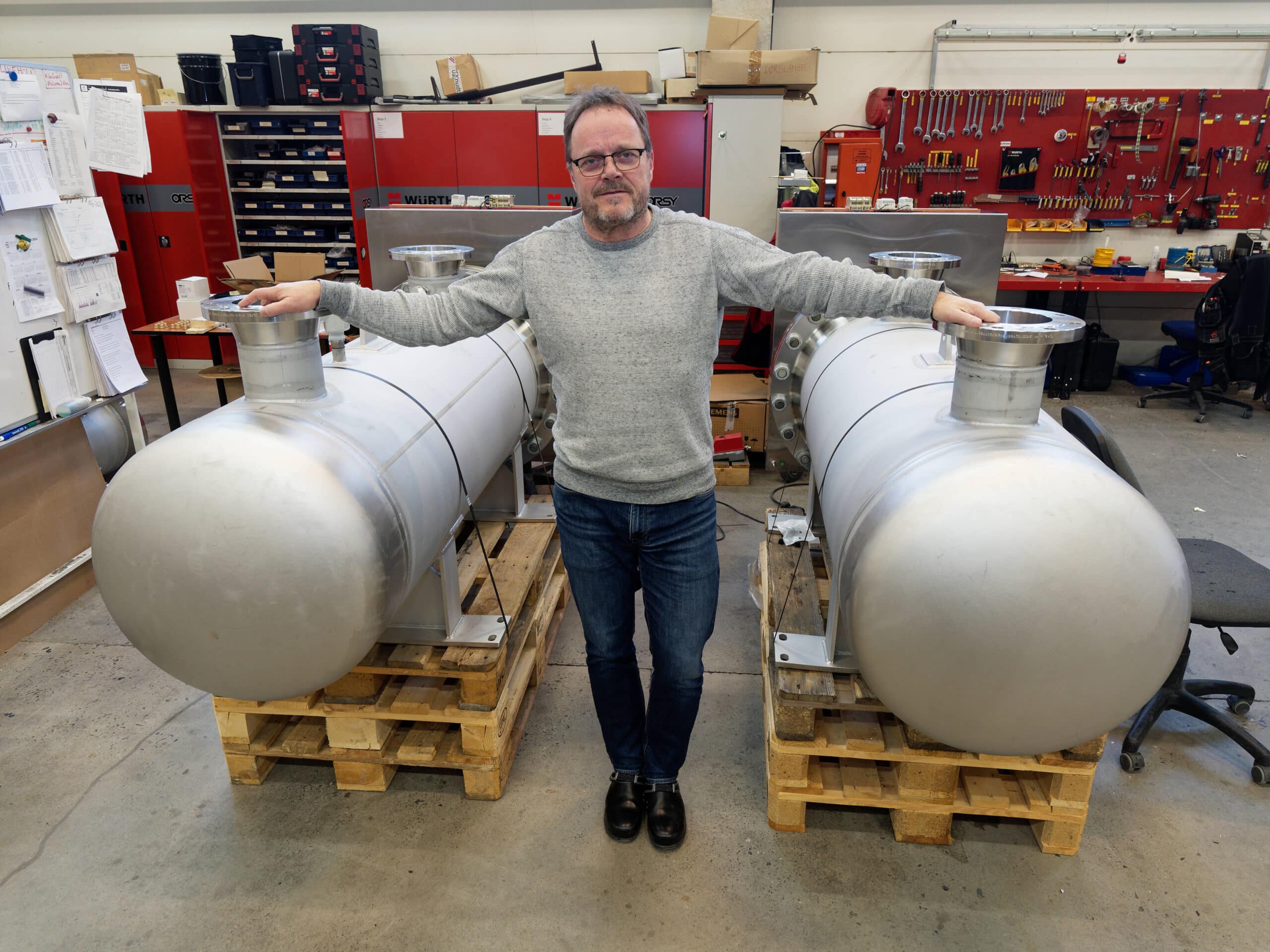They need heating for carbon capture. When KANFA are finding new solutions to save the climate, they use the heaters from Norske Backer.
They help the industry to capture CO2 from smoke and gas. It is difficult and demands a heating supplier who uses the correct materials. The energy experts at KANFA chose electrical immersion heaters from Norske Backer.
Dries clean CO2₂
- The energy unit we bought is used in a process where we dry clean CO2, the onshore director Johnny Stuen in KANFA is telling us. – CO2 must be dried before it goes to storage, he explains.
KANFA dries it out in gaseous form before it is being pressed together and made liquid to be stored. The immersion heater from Norske Backer is also used in the carbon capture itself.
- We then use an amine which binds to the CO2. Amine is a solvent that is used repeatedly in a circular process, Stuen says.

Separates substances
- To get the CO2 to let go of the amine, we need to warm it up. Then CO2 comes out, and we then reuse the amine again and again. To be able to do this, we must warm it up. The heating unit is used to run a stripping process where we separate the CO2 from the amine, he explains.
He compares the process with distillation: You warm up to separate substances with various boiling points. But the demands here are much stricter than when salt water are going to be fresh water, or wine are turned into spirits.
So are the demands for the immersion heater as well. First of all, it must endure those substances it is going to be in contact with. – The demand is constancy, because the amino is a bit corrosive. And then we need good control and smooth delivery of energy, but this is normally no problem, Stuen tells.
Experts on the materials
Sales engineer Jon Bull at Norske Backer confirms: - What decides what materials we use, is the mediums that are going to be heated, he says.
It is necessary with expertise to make this perfectly correct: What which endures some difficult mediums, does not endure everything. – “Acid resistant” is not acid resistant, as Bull puts it.
The immersion heaters from Norske Backer can be everything from those heating up the water in a water heater, to a source for heating gas, salt water, or oil. For this KANFA project the immersion heater also had to be EX approved. Heating of all the various liquids and gases requires different choices of materials. The design of immersion heaters, flow-through heaters, electrical duct heaters and control cabinets are also crucial.
- The customer contacts us wanting a heating solution. They do not know what effect is needed and which material that is the best option – this are factors that we are the specialists on, Jon Bull says.

Tailoring and speed
Johnny Stuen says that it is good previous experiences that made KANFA to choose heating solutions from Norske Backer. – Our boys working on the construction itself has experience with them as a good supplier, he says.
And we do not only talk about tailoring and the choice of materials. – They must deliver to the right price at the agreed time. Especially on the test units we have a tight schedule, Stuen confirms.
KANFA tests CO2 capture for several different customers. – Everyone who has smoke gas or an emission with 3 to 20 percent CO2 in it, are eligible to use the process we are discussing here, he explains.
Before they get that far, all emissions must be checked for other impurities. If there are impurities in the gas, the process must be tested to check if the amine is functioning properly with the gas as is or if it has to be cleaned for contaminants first.
Østfold first
Now KANFA is building their first ordinary, commercial plant. They are located at a small energy recycling plant: Østfold Energi’s waste incineration plant in Rakkestad.
For now, it is not many of such solutions that is operative, but Johnny Stuen is confident that this will become a big industry. KANFA only has a handful competitors in Europe. The two big projects now are the cement factory in Brevik and the waste incineration plant on Klementsrud in Oslo.
- Everyone who has a combustion process or a CO2 emission are eligible for this solution. This could be anything from a gas turbine that produces electricity to a bio boiler to an energy recycling boiler for waste, but also cements factories, aluminum, and steel plants. They normally have a lower CO2 concentration, which makes it a more difficult process, Stuen explains.
- All who has a CO2 emission looks at the opportunity to reach a net zero goal. The world must do it. Many can change their processes, but not everyone, Johnny Stuen says.
Find more detailed information here.
Do you need a heating solution, but unsure of what you need? Take a look at our previous projects or get in touch!

